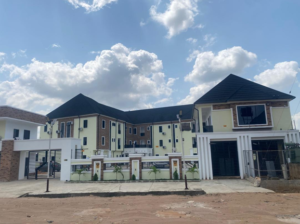17 Breast Cancer Facts You Need to Know. By Kaitlyn Pirie.
12 min read
The more you know, the more empowered you’ll be to take control of your health.

Thanks to things like Breast Cancer Awareness Month and Susan G. Komen Race for the Cure, breast cancer gets quite a bit of attention — and for good reason. Research shows that one in eight women in the United States will develop breast cancer. “It’s not necessarily something that someone else gets; a huge portion of the population is at risk,” says Jonathan Bank, M.D., New York-based board-certified plastic surgeon and member of AiRS Foundation’s Medical Advisory Board. Unfortunately, it can be difficult to sift through all of the information floating out there and figure out what’s actually true. With the help of some top-notch breast cancer specialists, Good Housekeeping is here to set the record straight and give you 17 breast cancer facts you need to know. Knowledge is power and when you’re armed with the correct information, you can make the best decisions about your health care — and spread the word to your friends.
Regular mammograms are necessary.
“The current recommendation is for all women age 40 and above to get an annual mammogram,” says Dr. Bank. He points out that mammograms are covered by insurance and there are many organizations that provide free ones for women who don’t have insurance so you shouldn’t let your financial fears get in the way of a life-saving screening. “Regular mammograms are the best test doctors have to find breast cancer early,” says Dorraya El-Ashry, Ph.D., chief scientific officer at the Breast Cancer Research Foundation. You may have heard that mammography doesn’t detect all breast cancer, especially if you have dense breasts. However, a mammogram is the first step in screening and can signal whether you might benefit from a whole-breast ultrasound or magnetic resonance imaging (MRI), both of which can detect tumors in dense breasts. “In the last 10 years there’s been tremendous improvement and continuing to be improvement on refining imaging technology and make them more accurate,” says El-Ashry. In fact, right now, the BCRF is funding research on contrast enhanced spectral mammography (CESM) to see if it can provide an even more accurate screening for women with dense breasts.

Potential pain shouldn’t prevent you from getting a mammogram. A mammogram requires each breast to be squeezed between two plates so images can be taken — a procedure that is completely safe, but some women find uncomfortable or painful. The good news is that discomfort is temporary and there are things you can do to lessen it. First, El-Ashry recommends scheduling your mammogram to take place during a part of your menstrual cycle when you know breast swelling and tenderness usually don’t occur. You can also take an OTC painkiller such as ibuprofen, aspirin, or acetaminophen about an hour beforehand. Lastly, ask your technician if they will allow you to adjust the mammogram compression yourself. One 2019 study published in JAMA Internal Medicine found that mammograms were just as effective and less painful when patients controlled the compression.
Mammograms are just one component of breast cancer screening. “A mammogram is basically a specialized X-ray of the breast,” says Dr. Bank. “What the radiologist is looking for is little white spots that are clusters of calcium.” That’s because cancer cells replicate and die abnormally since they have no self-regulation, and they end up leaving calcium deposits behind. “If there’s an abnormal area, the next step would be to get a diagnostic mammogram,” he says. “The same X-ray is magnified and focused on the particular sites that look suspicious so they can get a higher resolution picture and a little more information.” The same day that diagnostic mammogram takes place, an ultrasound of the breast is often done as well. This provides a different kind of picture of the structure of the breast. An MRI is sometimes conducted as well. If there’s something suspicious or unclear, a needle biopsy is usually taken: Under local anesthesia (numbing medicine), a few cells are taken out of the worrisome area and sent to a lab where a pathologist examines them under a microscope and can determine if they’re malignant or benign. The final step would actually be removing the cancer, if it exists, and examining it further.

Not all breast cancers form a noticeable lump.
“They often do form a lump, but that’s when they’re quite large,” says El-Ashry. “You want to find tumors well before you can feel them.” Plus, one form of breast cancer known as lobular breast cancer does not form a hard lump that you can feel. “If anything, it’s like a thickening of the skin over the breast in that area,” says El-Ashry. This means you need to get regular mammograms to spot cancer before a lump forms and be on the lookout for other red flags: nipple discharge, pain or inversion; dimpling, reddening or flaking skin on your breast; thickening or swelling of part of a breast; or breast pain that lasts for more than one menstrual cycle. Get to know your breasts so you can be aware of changes and ask your gynecologist or primary care doctor how to do a self-breast exam, suggests Dr. Bank.
Young women can develop breast cancer.
“While peak incidence is in women in their 60s and just slightly below that in their 50s, there are young women who get breast cancer,” says El-Ashry. In fact, research shows about 11% of all new cases occur in women younger than 45 years of age. “Unfortunately we don’t exactly know why, but breast cancer really spares no age group and no race,” says Dr. Bank. “We see patients diagnosed in their 20s all the way up to their 80s and beyond, but it’s not something that’s just in older women.”
Men can develop breast cancer too.
“While the majority of people who get breast cancer are women, men can and do get breast cancer,” says El-Ashry. “In fact, about one in 830 men will be diagnosed in his lifetime. That’s an incidence rate of about .001 of that of women but that still results in a significant number of men having to undergo breast cancer treatment.” Because the risk is so low for men, there’s no need for them to get regular mammograms, but men should look out for the same red flags mentioned above.

The role your genes play in breast cancer risk is complicated.
“Women who should be at higher alert are ones that have strong family history of breast cancer,” says Dr. Bank. That said, you need to think about both sides of your family. “You get a gene from your mom and a gene from your dad, so if the breast cancer is on your dad’s side and they’re all BRCA1 or BRCA2, your dad’s side is just as meaningful for your risk of breast cancer as if it were on your mom’s side,” says El-Ashry. You also want to tell your doctor about any ovarian, colon, pancreatic, or skin cancer in your family because depending on the genetic mutation that may or may not be present, it could potentially increase your risk of developing breast cancer, adds Dr. Bank. However, inherited genes are just one risk factor. As El-Ashry points out, 90% of breast cancers are not linked to a person’s family history. She says the BCRF is looking at a whole slew of genes (beyond BRCA1 and BRCA2) that are mutated in breast cancer patients. It could be that a number of them in combination can elevate your risk — not just one inherited gene.
You can lower your risk.
“A healthy lifestyle is pretty well established to be able to effect significant risk reduction,” says El-Ashry. That includes getting regular exercise (150 to 300 minutes of moderate exercise or 75 to 150 minutes of vigorous exercise every week), following a healthy diet (such as avoiding processed foods, eating more fruits and vegetables, and cutting back on red meat), maintaining a healthy weight (a body mass index of less than 25 is ideal) and not smoking. “There is also an association between alcohol and breast cancer risk, so people should be mindful of that, and reduce alcohol intake,” adds El-Ashry. She says much of the risk reduction that occurs with a healthy lifestyle has to do with reducing inflammation in the body, and some BCRF researchers are looking into how inflammation of fat cells may lead to breast cancer. Her hope is that as the field of precision medicine evolves, we might one day know what specific lifestyle factors make the biggest difference in risk reduction for individual people because the exercise plan that works for her might not lower inflammation for someone else.
Breast cancer is often treatable.
“Breast cancer survival rates have improved substantially over the past several decades, largely due to improvements with early detection of disease through mammographic screening and advances in all aspects of treatment, including surgery, radiation and targeted medical therapies,” says Lisa Newman, M.D., M.P.H., F.A.C.S., F.A.S.C.O., chief of the breast surgery division and director of the Interdisciplinary Breast Program at Weill Cornell Medicine/NewYork Presbyterian Hospital Network. “Combinations of these various treatment approaches has resulted in the high majority of breast cancer patients being long-term survivors that continue to lead full, productive lives.” According to the National Breast Cancer Foundation, 62% of breast cancer cases are diagnosed at a localized stage (when the cancer hasn’t spread beyond the breast) and 99% of those people live at least another five years.
Treatment doesn’t always involve chemo.
“Breast cancer was treated as one disease 30 or 40 years ago, but now we know that there are four or five very clear, different subtypes of breast cancer that all have very different targets that we can use to define molecularly targeted therapies that aren’t your traditional everyday chemotherapy,” says El-Ashry. That means a person’s treatment plan will be individualized based on the cancer cells themselves and the alterations they’ve undergone, as well as the size of a tumor and if/where it’s spread to. Treatment could include a combination of surgery, chemotherapy, hormone therapy and radiation, or just some of those options. For instance, two-thirds of breast cancers are spurred on by estrogen or progesterone, and genotyping (testing that analyzes the DNA of the cancer) can help doctors figure out which treatment one might respond best to. “Just like the breast grows and changes size and fullness depending on one’s menstrual cycle, those same tissues that respond to the circulating hormones in the bloodstream trigger a response in the cancer cells,” says Dr. Bank. “So, with certain medications you can manipulate the level of the hormones in the woman’s body and that can affect the growth or help with the treatment of the cancer.”
Health insurance must cover the cost of reconstruction.
“It’s a federal law that breast reconstruction is covered by insurance,” says Dr. Bank. “That’s all types of breast reconstruction, including if one breast was removed and the other one wasn’t — we can do procedures on the other side just to match the reconstructed side and insurance covers that.” It also means that if you had reconstructive surgery years ago and want adjustments made, insurance will cover additional surgery. Of course, not everyone has insurance, but the AiRS Foundation is one of several organizations that provide financial help to ¬women who lack insurance or have trouble covering their co-payments and deductibles. “There are many advantages psychologically in performing a reconstruction,” says Dr. Bank. “It’s much more than just a cosmetic thing — it’s a well-being issue. We know that women with modern-day treatments live many, many years after having survived breast cancer. The goal today is to help them thrive and not be concerned about things that could be improved.”
Reconstruction can be done during tumor removal.
There are different types of breast reconstruction, depending on whether a full mastectomy is done or a lumpectomy. Prior to going under the knife, you and your oncologist, cancer surgeon, and plastic surgeon will come up with a plan. You may opt for a full reconstruction, no reconstruction, or oncoplasty. “There are many advantages of doing reconstruction immediately, so the best time to reconstruct the breast and hope for the best aesthetic outcome is at the time of the mastectomy,” says Dr. Bank. “Usually there’s an additional procedure involved at some point down the road to make minor improvements.”
Nerve-saving pain-reducing techniques are in the works.
Some women who undergo any type of operation on the breasts suffer from chronic pain afterward. “We think a lot of it is related to nerves that can be cut during surgery,” says Dr. Bank. “One of the main focuses of my practice these days is dealing with that chronic pain and developing techniques to avoid it during the initial operation and maybe even restore sensation using nerves that we reconnect during surgery.” It’s a developing field, but he’s been working closely with breast surgeons to help them preserve nerves during mastectomies and reconnect them whenever possible.
A tattoo specialist can give you a “new nipple.”
Despite doctors’ best efforts, sometimes the nipple and areola can’t be saved during breast surgery. However, some tattoo artists specialize in creating new ones — and it’s covered by insurance. “In the past, I used to do the areola tattoos on my own,” says Dr. Bank. “We had okay results, but it doesn’t even compare to the results that we get now with professional tattoo artists doing the nipple and areola tattoos. It really is incredible.” He says, if a woman wants it, he can often reconstruct three-dimensional bump to have something projecting off the surface of the breast that the tattoo artist can add color to so it looks very natural. Skeptical? Check out the amazing work of Nicole Rizzuto, a tattoo artist that Dr. Bank works with.
Not everyone has the same access to breast cancer care.
Tragically, not everyone is on equal footing when it comes to breast cancer survival. “Breast cancer death rates are 40% higher in African Americans compared to white American women because of a combination of socioeconomic factors,” says Dr. Newman. “Socioeconomic disadvantages such as poverty and lacking insurance are more prevalent among African Americans, resulting delays in diagnosis and treatment.” On top of that, she notes that African American women also have a two-fold higher risk of developing biologically aggressive breast tumors known as “triple negative breast cancer.”
According to one study, half of all people who’ve received a breast cancer diagnosis say they have experienced a delay in care due to the current pandemic — and there are many reasons for this. For starters, many mammography units have been shut down, which delays diagnoses. And when they do reopen, their capacity is reduced because of social distancing measures. Plus, many people are afraid to go to the doctor for fear they will be exposed to the coronavirus. To make matters even worse, “the COVID-19 recession has resulted in many Americans losing their employment and employment-based insurance, leaving them with impaired health care access,” says Dr. Newman. “African Americans and Hispanic-Latina Americans have experienced disproportionately high rates of unemployment compared to white Americans.” If that weren’t enough, many research programs have been put on pause, nonprofits are struggling to get funding, and public hospitals (which tend to serve areas with high poverty rates) have been disproportionally devastated financially by the costs of COVID-19 care and are less able to deliver cancer care now. The best thing you can do is stay in touch with your doctor to make sure you don’t get behind on screenings and alert them right away if you notice any red flags that might indicate breast cancer. If you’re able to, you can also donate to a breast cancer nonprofit and push for legislation that supports public hospitals.
Telemedicine is changing breast cancer treatment.
“The one nice thing that COVID-19 has opened up is telemedicine,” says Dr. Bank. “Some people have difficulty traveling between states, or even getting care locally.” When COVID-19 shut down many doctor’s offices this past spring, practices like the one Dr. Bank is a part of launched online services to provide telemedicine consultations. “I was doing those things even prior to COVID-19 and it would be like a FaceTime kind of thing, but now we have more of an official platform.” Video appointments can be especially helpful for both initial consultations and follow-up appointments. For instance, you can show your doctor a lump or rash to see if it warrants an in-person screening, and surgeons can examine incisions remotely and guide patients in post-op care.





